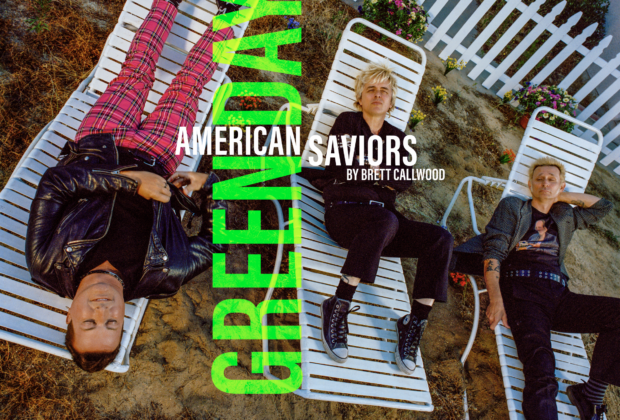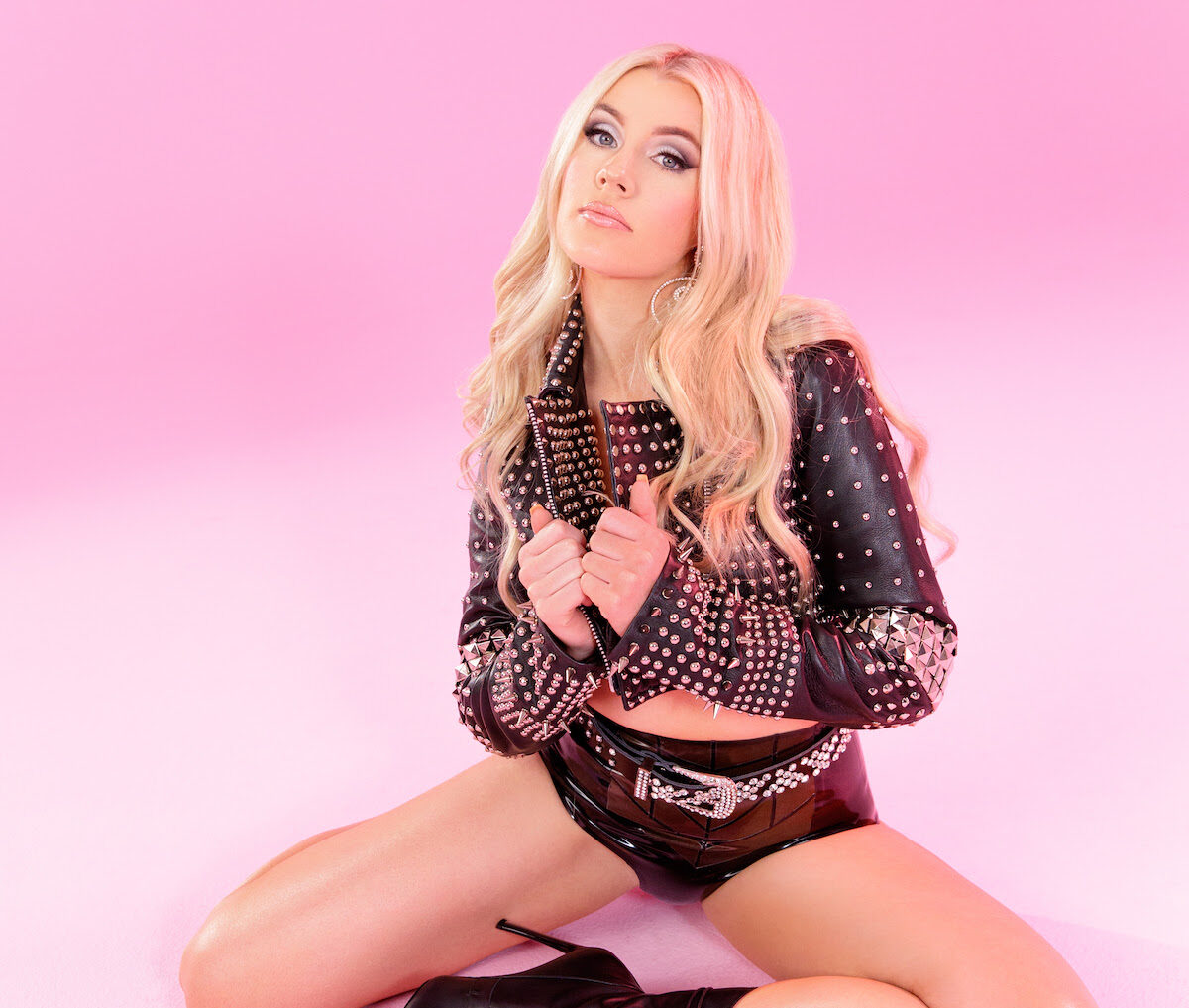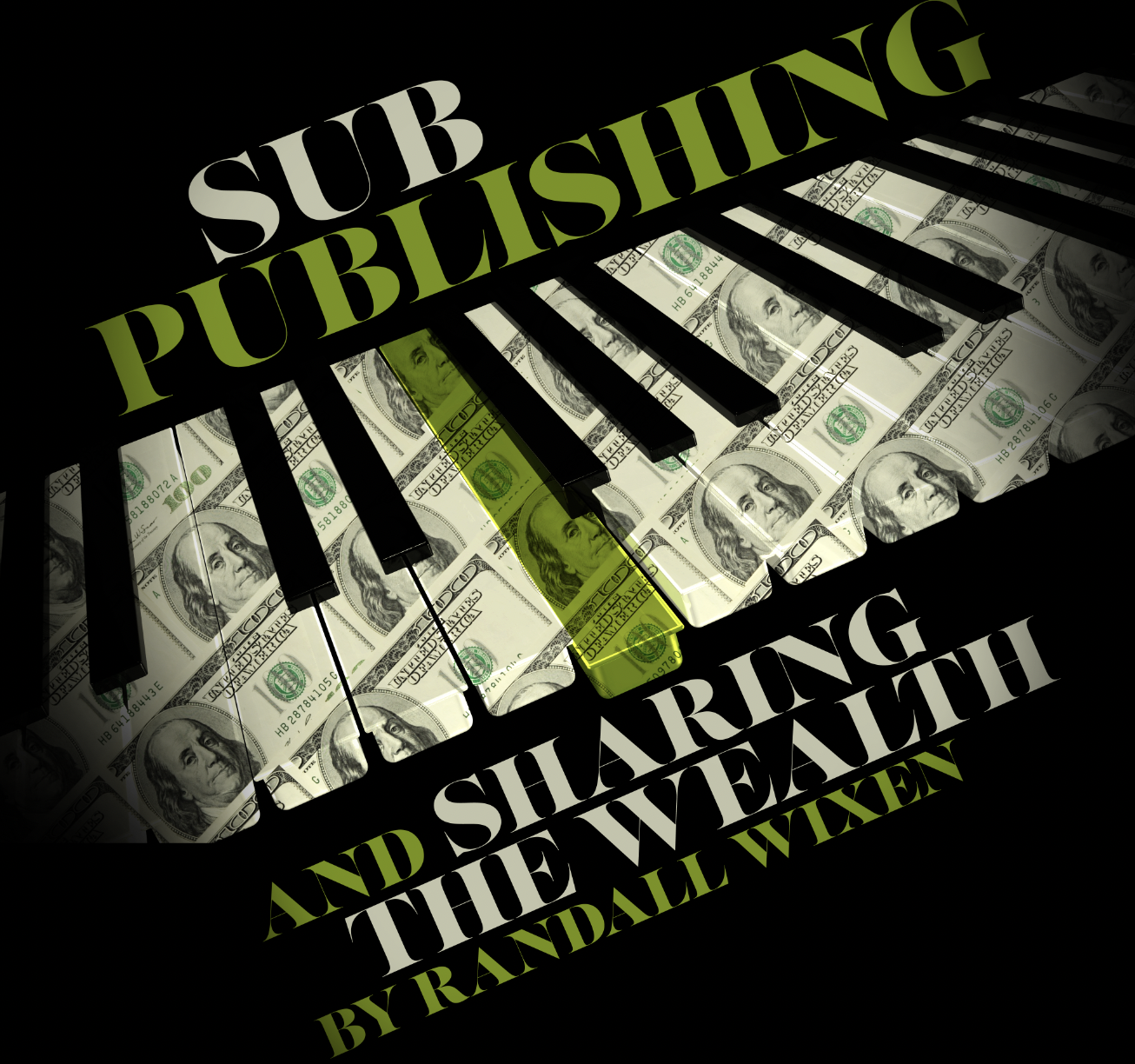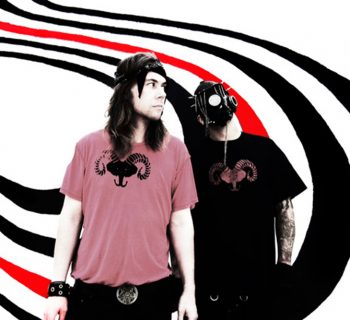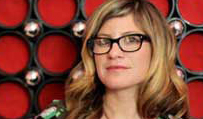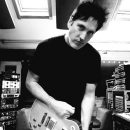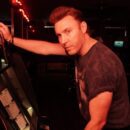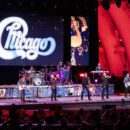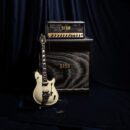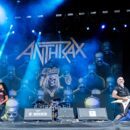WHEN GREEN DAY STRODE ONTO THE STAGE at the immense So-Fi Stadium in Los Angeles in the middle of September—the weather perfect, the crowd going seven shades of apeshit, and the stage lights beaming—it was immediately clear that they very much belong in these enormo-venues, the places where we often find the likes of Taylor Swift and the Rolling Stones. As the screams increased in volume and the intro tape faded out, the pyrotechnics primed, Green Day set about proving themselves to be every inch the rock ‘n’ roll icons that they undeniably are.
Ever since they broke into the mainstream with their third album, Dookie, in ‘94, they’ve succeeded in doing exactly what a punk band should do: delighting some while annoying the hell out of others. As the years have progressed, the number of people in column A far outweighs those in column B. But it’s reassuring to know that they’re still capable of ruffling feathers and raising hackles as they approach “veteran” status. Whether it be some mohawked old gatekeeper denying Green Day their punk rock credentials, or middle-of-the-road dad-rockers annoyed about the band’s left wing politics, Green Day are still happy to offer a metaphorical bird-flip to the naysayers.
For the record, their punk rock credentials are still intact; earlier in the year, we caught them at a pop-up show at the relatively minute Echoplex in L.A., one of a series of intimate warm-up gigs prior to the main tour. There was a time when they built their reputation at these venues, famously at 924 Gilman Street in Berkeley. The fact that they remain equally at home in small rooms and stadiums speaks volumes. Are they rock stars or are they punks? They’re both, and cynics just have to deal with that fact.
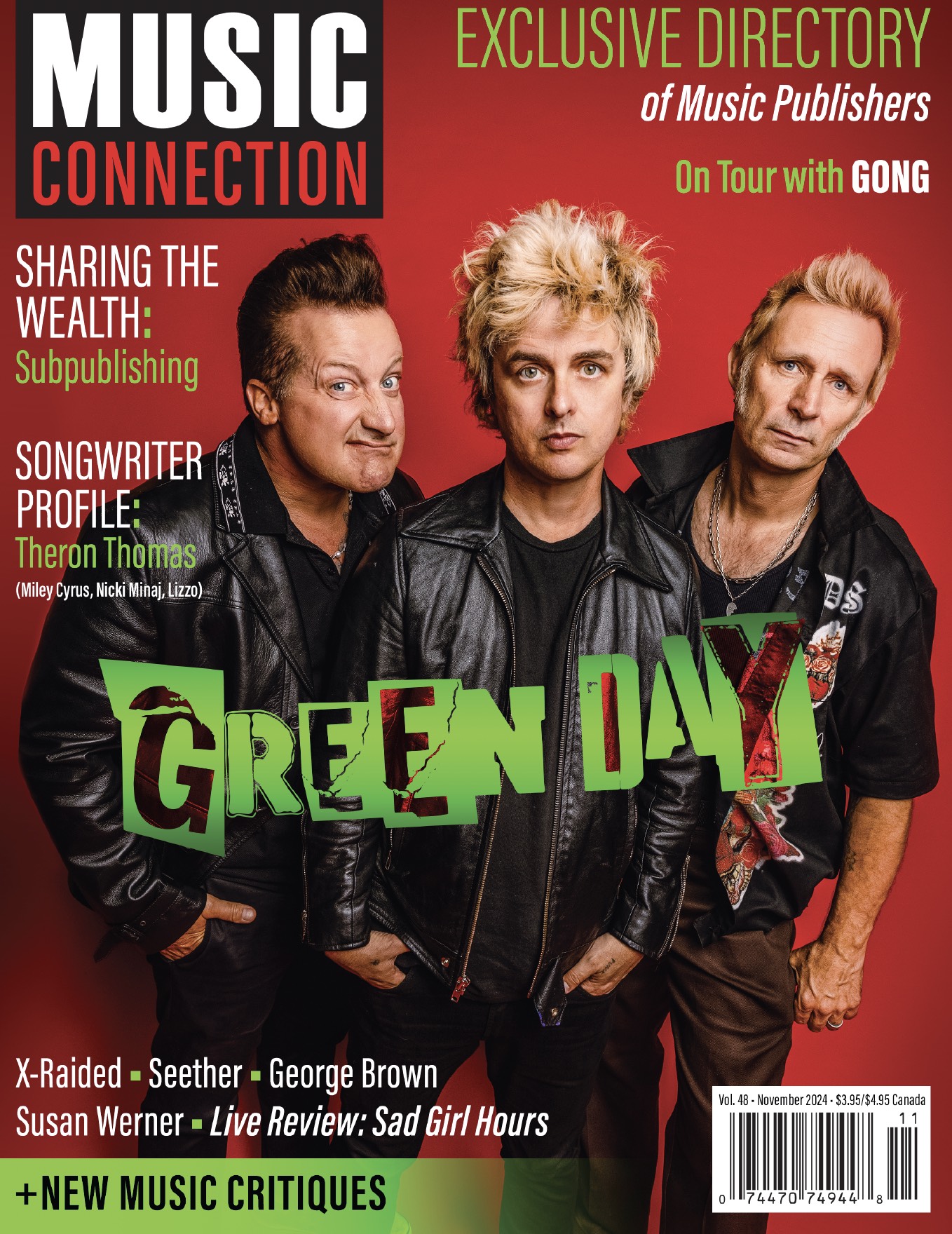
This tour has three very distinct parts. It’s a celebration of the 30th anniversary of breakthrough album Dookie. It’s also a celebration of the 20th anniversary of their seventh album, American Idiot. Both of those records are performed start-to-finish. And finally, it’s a promotional tour for their new and 14th album Saviors.
Any one of those things is a big enough undertaking. All three together sound brutal, if a lot of fun. The set times are long, perhaps countered by the fact that there’s at least two days between each gig. The three men are in their early 50’s now; they’re not kids anymore even if they still overflow with youthful energy and shit-eating grins. So they have to take care of themselves.
“I think that we've definitely gotten into the flow of it, and it's been really exciting because there's new things that we try that we've never done before on stage,” says frontman Billie Joe Armstrong. “Like, a spectacle. I think one of the things for us is to still create some sort of intimacy and be really connected to the fans, but at the same time, make a spectacle out of it too—make it so fans are part of that spectacle. Our bodies definitely hurt afterwards now that we're 52 years old. I remember when the idea came up to do both records. I was like, ‘How the hell are we gonna pull this off?’ But we have fun every night.”
Those pop-up shows earlier in the year certainly helped the band hone the set, to see what landed and what didn’t, like a comedian working out their special in the clubs before taking it to Netflix.
“When we put out a new record, we really want to get into the weeds and get to know it intimately, and then get comfortable with it where we can sort of shape-shift however we want, when it comes to making a set list and wherever we want to take the record on the tour,” says Armstrong. “I think for Saviors, this is one of the best times that I ever had, promoting a record by doing the smaller shows. You want to have those kinds of shows where, 20 years from now, people say that they were at but they really weren't.”
That’s the key to all of this: Green Day are still having a full-on blast doing this music malarky, 37 years after initially forming as Blood Rage, then Sweet Children, in 1987. The three men—Armstrong, bassist Mike Dirnt and drummer Tré Cool—beamed throughout the So-Fi show, as they did throughout the Echoplex show, as they did throughout this Zoom interview. Armstrong exudes frontman energy and he talks the most. But the other two burst with charm, humor and a clear affection for each other. They might not play the “bruddahs” card as blatantly as the Ramones did. But unlike the New York punk pioneers, Green Day genuinely like each other. That’s partly why the shows are so much fun, and it also helps explain why their recent studio albums don’t disappoint the fans. At the gigs, people don’t sit down or go get a beer when the new songs get an airing. They open with the topical “The American Dream is Killing Me” from Saviors, before diving into Dookie (so to speak). The energy never dips, from that new song through some of Dookie’s deeper cuts.
“Some of that stuff we hadn't played in, like, 30 years,” says Cool. “Some of the deeper cuts on Dookie, it was like, ‘Oh, man, these songs are pretty fun to play.’ We haven't been playing them because there's so many songs off of Dookie that we have been playing. The ones in-between those took a little work to kind of figure out, at least for me, to play them properly. I think remembering what the songs originally were about, those memories are pretty vivid for me.”
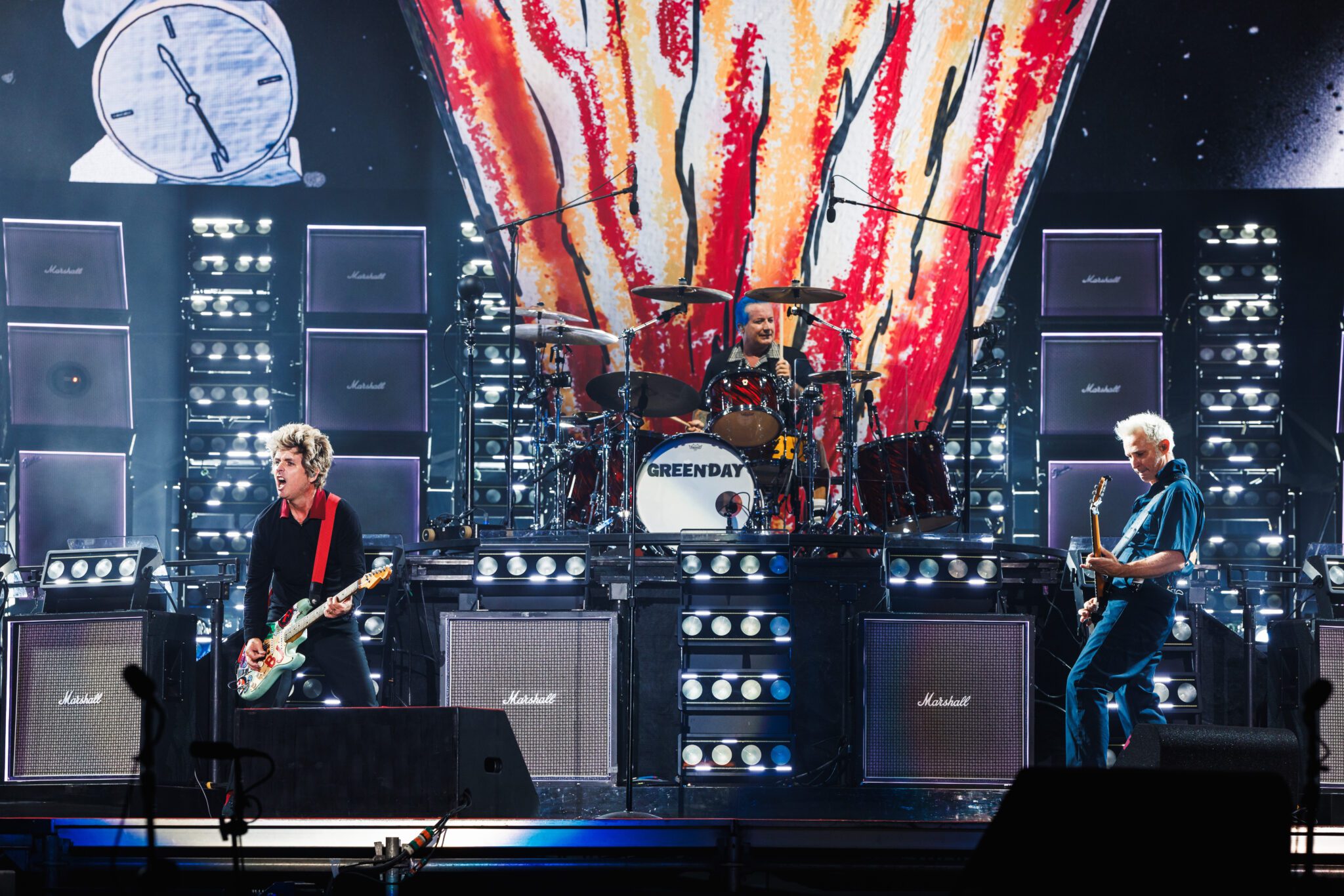
It was a similar experience when they re-lived the American Idiot album, a veritable time-trip as they dug deep to recapture what drove perhaps their most politically savvy piece of work.
“I can remember where we were at when we made the first demo, and I remember putting together the songs in the studio,” says Armstrong. “It helps that we had a video camera while we were making it, too. It's interesting. The young kids might be more into American Idiot. People our age or a little bit younger are into Dookie, but you're watching either discovery, or people that grew up listening to the record.”
“The American Dream is Killing Me” feels like an appropriate opener on a tour when they’re playing American Idiot in its entirety. One of the great juxtapositions that has worked so poetically for Green Day is their apparent wide-eyed joy, and the cynicism that never seems too far away from their lyrics. They’ll grin at you and then bite you, and it just works.
“[‘The American Dream is Killing Me’] is definitely a topical song,” says Armstrong. Especially when you see that the cost of living is out of control for so many people. People are in the streets, and what are the solutions to that? I guess it's like a form of empathy, and trying to not really have a solution, but just painting a picture of what's going on right now all over the country.”
Green Day has never shied away from politics, American Idiot being the clearest example. That same year, 2004, they also appeared on Fat Wreck Chords’ Rock Against Bush, Vol. 2. On this latest tour, they had the “get out the vote” group HeadCount on the road with them, their QR code on the big screens between bands. Green Day might not have made a big Taylor Swift-esque endorsement, but we know where their collective heart lies.
“People know where Green Day stands,” says Armstrong. “It's in our songs. It's the way that we've talked about things ever since the beginning. Even before that, we were writing about politics. You know, we have a firm stance of anti-racism [and] anti-homophobia. I'm a middle aged man now. We brought out [nonprofit group] HeadCount, and it was by far the biggest turnout for people registering to vote that they've ever had on a tour. For Taylor Swift and Billie Eilish to come out and say something, I'd rather be an ally of that than to be trying to jump on that. But I agree with them.”
So yeah, there are healthy doses of politics and nostalgia on this tour. But it mustn’t be forgotten that Green Day is promoting the Saviors album, a typically brilliant slab of work that is snotty, zany, and important in equal measure. Armstrong has said that there are seven songs on this record that didn’t make it onto the last one, the Butch Walker-produced Father of All Motherfuckers, making it all the more startling that this album is so good, that it flows so beautifully. The songwriting sees the band at its incisive, melodically on-point best. For their part, they have a process that works.
“It's kind of a combination of doing something new and doing something old,” says Armstrong. “I think the way that we've gotten together and rehearsed together, and learned the songs together in a rehearsal space, we've been doing that since we were 16 years old. So that's something that's always been a part of how we put a song together. But then the new thing for us was going to London at RAK Studios. We've never recorded anything outside of the country, except for, like, a Steve Lamacq [English radio presenter and DJ] session or something like that. I think that the unsung hero of that record is probably the city of London.”
“RAK Studios had such a vibe,” continues Dirnt. “It was just great to walk around London and just think about music the whole time. And yeah, we’ve got a rich history with music there.”
RAK Studios was founded in ‘76 by English producer Mickie Most, famous for working with the likes of Suzi Quatro, the Animals and Herman’s Hermits. Artists that have recorded at RAK include the Smiths, the Jam, the Pogues, and the Psychedelic Furs. There’s clearly a bit of magic in the air there, and Green Day took full advantage. Saviors takes the listener on a journey, without there being any mapped out narrative concept. Armstrong puts that down to a solid combo of luck and judgment.
“It's hard to tell,” he says. “The song ‘Look Ma, No Brains,’ I was like, ‘that's a great track for the record.’ And then it's like, the song ‘Saviors,’ that's a great track. And then ‘American Dream…’ came up, and we were like, OK, that's gonna be a proper beginning of a record.’ It's just like this declaration. ‘Fancy Sauce’ dives into mental health. It's like, what is the experience of listening to the whole record, and at the end, it's almost like your life flashing in front of your eyes. That was the intention.”
Each member has their own favorite song on the album, and Armstrong’s is “Coma City.”
“I love, love ‘Coma City,’” he says. “When we start locking into that kind of energy, it's something we've been doing for a long time. And every once in a while we get lightning in a bottle with it. It feels like we're just really blazing. I love the breakdown with Mike and Tré. I'm not so unblocked.”
“For me, it's ‘Father to a Son,' adds Dirnt. “Because we were kind of like, ‘are we done with the record? Is it finished?’ And then Billy started playing that guitar line, and then me and Rob [Cavallo, producer] were like, ‘yeah, we’ve got to record this.’ Then we went back into the studio, and that's the song. It really turned out great.”
As they say, Saviors saw the return of producer Cavallo for the first time since 2012’s ¡Uno!, ¡Dos!, and ¡Tré!
“We just started talking about it and I said, ‘we're recording in London, you want to come?’” says Armstrong. “He was like, ‘I'll go anywhere with you guys.’ So yeah, he did a phenomenal job, and Chris Lord-Alge did an amazing job of mixing it, and the mighty Chris Dugan with the engineering. It was just a great, great experience. The team was really solid.”
It has been some time since the three permanent members of Green Day have been the only people on stage. Long-time touring guitarist Jason White is always up there, as is multi-instrumentalist Jason (brother of Josh) Freese. However, when it comes to recording, it’s left to the main three.
“It was just the three of us and Rob contributing to the record,” says Cool. “They really like it, though, and they play it really well.”
Green Day being punks, albeit stadium punks, a conversation about gear is quite short. Armstrong has been playing “Blue,” his beloved Fernandes Revival RST-50, since he was 12. In London, they used a HH amp. Much of what they used on the record is the same as what they play on stage, with a few differences.
“This year, I used the bass I played on ‘Longview’ and in the ‘Basket Case’ videos,” Dirnt says. “I pulled those out. Gibson's made a couple of new Epiphone versions, and it's been really fun to pull those out because they're just big and they look cool, and they punch the sound of the album.”
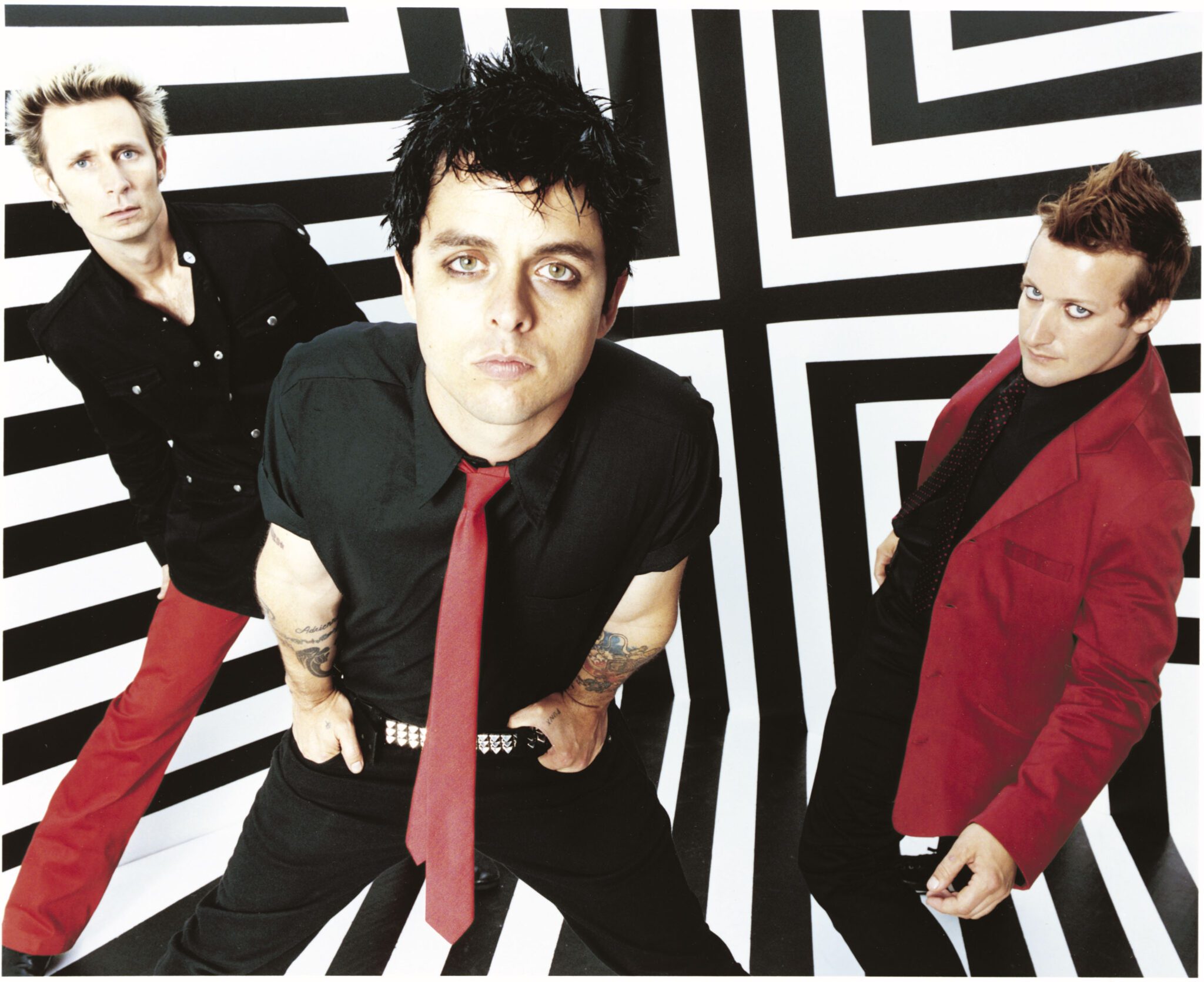
“I played Ludwig drums on stage,” says Cool. “And whatever sounds good in the studio, but the one that I've been playing, the same snare that’s on Dookie. It's on every Green Day record.”
Regardless, the studio results are great, and the band sounds incredible on stage. But again, when your dynamic, your aesthetic and your sonic delivery is still very punk rock even when the venue is a stadium, then there are bigger concerns than the technical specifications. It’s also worth noting that Green Day has assembled an incredibly good bill for this tour. Punk upstarts the Linda Lindas are opening up, Bay area punks Rancid (long-time friends of Green Day) are next, then alt-rock titans the Smashing Pumpkins are the final warm-up.
“We called the Linda Linda’s, and they were an immediate yes,” says Armstrong. “Rancid–we basically grew up with them. And then, you know, we were thinking about the Pumpkins and just saying, ‘I wonder if they would say yes to it.’ And then they were really into it. The last time we played with them, we played the Reading Festival [U.K.] in ‘95, and then in ‘94 we did Lollapalooza. They were headlining with the Beastie Boys. We did an acoustic set with them at the Bridge School benefit, Neil Young's gig. So we've been crossing paths through the years. And they're really great people, and a great band. So it's been a great combination.”
That it has. The three other bands on the bill have helped raise the carnival stakes. But ultimately, these shows are all about Green Day. A celebration of their past, as well as the present. Armstrong says that every night of the tour has been special, though obviously the Bay Area show at Oracle Park in San Francisco was particularly meaningful.
“I think there's so much pride in the room,” he says. “Just generationally, someone saying, ‘I saw you guys in ‘94 at the Bill Graham Civic,’ or something like that. And then now, they bring their adult kids in 2024. A lot of generations. We keep on getting a new group of young fans that keep on coming out to the shows, as well as people that are our age.”
That’s perhaps the greatest gift that Green Day offers, and why the Saviors album title is more appropriate than perhaps even they could have guessed. Nostalgia is great but it only goes so far. The fact that Green Day continues to tap into a new well of young fans while retaining the ride-or-die faithful is impressive. And if they get a few thousand young people out to vote at the same time–all the better.
“I think our intentions are always to make timeless music,” says Armstrong in conclusion. “I think Dookie is a record that you can still put on, and it sounds like we made it yesterday, even though it was years ago.”
QUICK FACTS
• In September, Dookie was certified Double-Diamond, only the 13th album ever to achieve the rare feat of selling more than 20 million units. It joins the likes of Michael Jackson’s Thriller, AC/DC’s Back in Black, Pink Floyd’s The Wall, Led Zeppelin IV, The Beatles (White Album), among a few others. “I was surprised that it went Double Diamond, because it's hard to gauge when people are albums,” says Armstrong.
• The Offspring’s Dexter Holland might have a hot sauce, but Green Day has a coffee. Punk Bunny sees the band partner with Keurig Dr. Pepper. “We've been doing it for about 10 years, actually, but we rebranded to be in line with the band, and it's great,” they say. “We still support a lot of the same causes locally and everything else, but we're just able to integrate it with a little more mischief, with the bunny.”
• With this North American tour done, Green Day play Mexico City in November and then will take a break before heading to Asia in January. They’re aiming to reach Australia, South America and Europe in 2025.
• When Green Day say they’re performing Dookie in its entirety, they’re not messing around. Drummer Tré Cool leaves his kit to sing the “hidden” track “All By Myself” each night—one of the funniest moments of the set.
• As well as Queen’s “Bohemian Rhapsody,” Green Day has the house play Ramones’ “Blitzkrieg Bop” before coming on stage each night. The two songs, one after the other, apparently have the power to generate peak excitement immediately prior to a punk rock show.
Photos by Alice Baxley, Emmie America, Greg Schneider

